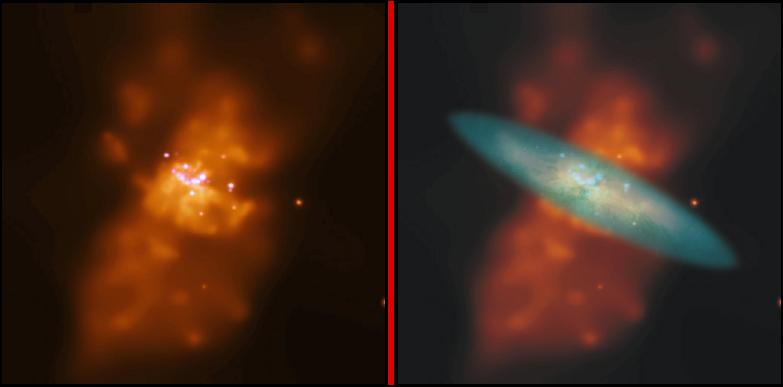
 Credit: NASA/CXC/SAO/PSU/CMU
Credit: NASA/CXC/SAO/PSU/CMU
Starbursts and Stellar Deaths
M82, at a distance of 11 million light years, is a rare nearby starburst
galaxy where very massive stars are forming and expiring at a rate ten
times higher than in our galaxy. These very massive stars are extremely
luminous and use up their nuclear fuel very quickly. When all the fuel is
gone, the star collapses on itself, and this collapse produces a supernova
explosion. The large numbers of very massive stars in M82 produce a very
high rate of supernovae. These supernovae produce superhot (6 million
degree) gas which explodes into and out of the galaxy. In the image on the
left above (obtained by the Advanced CCD Imaging
Spectrometer on the Chandra X-ray
Observatory) this hot gas is clearly seen exploding beyond the galaxy,
along with a number of point sources at the center of the galaxies. These
point sources are probably the collapsed remnants of supernovae. The image
on the right shows the optical image of the galaxy superimposed on the
X-ray image. Chandra's precise x-ray
images of this starburst wind, together with optical, infrared and
radio images, will enable astronomers to study all the components of a
starburst, from the formation of stars to the explosion of matter out of
the galaxy.
Last Week *
HEA Dictionary * Archive
* Search HEAPOW
* Education
Each week the HEASARC
brings you new, exciting and beautiful images from X-ray and Gamma ray
astronomy. Check back each week and be sure to check out the HEAPOW archive!
Page Author: Dr. Michael F.
Corcoran
Last modified May 22, 2000


